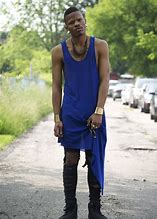Biblical Principles Regarding Dress (continued…)
- Distinct Masculinity and Femininity
Deuteronomy 22:5 – “A woman shall not wear a man’s garment, nor shall a man put on a woman’s cloak, for whoever does these things is an abomination to the Lord your God.” Egyptian or Canaanite culture apparently contained some form of perverse trangenderism. God forbade his people from wearing what would identify them with the opposite sex.
First Corinthians 11 is Paul’s treatment of the topic of women wearing head-coverings. In Graeco-Roman culture, all women wore head-coverings, as is true in some cultures to this day. To appear in worship without one was, in that culture, an act of defiance – both against male headship in the church, but also against the created order. She was either doing the equivalent of appearing like a man, or appearing like someone immoral and without restraint.
In our context, fashions are increasingly unisex. This is not necessarily a problem, because one can still look  distinctively male or female by your overall appearance. But in a culture of transgenderism, the move is now to blur the lines as much as possible. Christians need to find ways within current clothing styles, to glory in biblical manhood and womanhood. Certain occasions particularly call for celebrating manhood and womanhood. In dressing our children, we should provide them with occasions to revel in being distinctively male or female.
distinctively male or female by your overall appearance. But in a culture of transgenderism, the move is now to blur the lines as much as possible. Christians need to find ways within current clothing styles, to glory in biblical manhood and womanhood. Certain occasions particularly call for celebrating manhood and womanhood. In dressing our children, we should provide them with occasions to revel in being distinctively male or female.
- Appropriateness for Occasions
As Christians are to be discerning about the meaning of all things (1 Thes 5:21), we should consider what our dress communicates. As a people who should be known for dignity and soberness, we should consider what belongs in what venue. What do we wear to a court case, and why? What do we wear to a wedding, and what do we wear to a funeral? What do we wear on a hike, and what do we wear to the beach? What do we wear to formal dinners? What does it mean to be casual, and what does it mean to be formal?
When it comes to church, simply ask yourself, what kind of occasion is this? What are we doing here? Is it a light-hearted event, or a serious one? What am I telling myself about the meaning of the Lord’s Day by how I dress, and what am I telling my neighbours?
simply ask yourself, what kind of occasion is this? What are we doing here? Is it a light-hearted event, or a serious one? What am I telling myself about the meaning of the Lord’s Day by how I dress, and what am I telling my neighbours?
Discerning the Meaning of Changing Fashions
Holly Stratton: “As we address modesty, another difficulty comes with our differing perspectives on culture and on the varying degrees with which we allow it to influence our clothing choices. When the fashion industry introduces a style that is openly anti-biblical in the message it has been designed to send, it is typically rejected by those of us who are seeking to please God even when the style is modest. However, grave differences can be found in how quickly or slowly we eventually embrace the style since we possess not only varying perspectives as to when the initial messages of sinful intent have subsided but also varying perspectives about the identification the style continues to carry.
The designs of Coco Chanel, for example, illustrate our differences in this rejection and acceptance process. In the 1920’s, it was scandalous when Chanel removed the darts and waistlines from dresses that had given them a distinctly feminine form. Her introduction of a loose-hanging shift dress gave women a “boyish and masculine figure” that greatly disturbed conservatives. Though the initial intent of her shapeless garments caused rejection, eventually the free-flowing designs were embraced. (“Jumpers” evolved from this design.) Controversy continued to follow Chanel when she introduced women’s suits. Lapels, herringbone, glen plaid fabrics, and button-down and French-cuffed blouses found as much controversy as the trousers she included in her collections.”
The same is true of wire-rimmed glasses, bell-bottoms and flared pants. These lost their counter-culture rebellious meanings after the 70s.
Though godly wisdom may dictate our hanging onto bars of rejection when anti-biblical messages swirl around a particular design, godly love demands that we don’t kick at others who deem it acceptable to release their grip. Much damage can come when sinful judgment finds us establishing ourselves as the determining factor of when bars can righteously be released. There will always be rejection bars to which we should and must cling as we seek to honor and to obey God and to keep a clear conscience before Him, but we must do so humbly and graciously.
In spite of the challenges outlined in this article, a more important and poignant message is that the path of modesty is paved with the glorious Gospel of Christ. As the truth of His grace fills the heart of a Christian woman, she will develop a mind of sobriety that will find her setting “her affection on things above” (Col. 3:2).  The more she is consumed with the fact that her nakedness has been covered with robes of righteousness, the more she will desire to physically clothe herself in a manner that will richly—and not skimpily—demonstrate that covering. As she grows in grace, she will begin to more fully understand that, as a redeemed child of God, her clothing represents more than a physical covering. She will develop a shamefaced attitude that comes from a heart that remains keenly aware that the shame of her sin was covered by the precious blood of her beloved Savior, a covering she was unable to procure for herself. A yearning to “conceal, not reveal” will grow within her heart as she gains deeper understanding of that marriage, a beautiful picture of the Gospel that has covered her sin, offering the one venue where her nakedness can be shamelessly exposed. This truth will drive her to joyfully preserve herself for a holy union she will cherish whether she is married or not.
The more she is consumed with the fact that her nakedness has been covered with robes of righteousness, the more she will desire to physically clothe herself in a manner that will richly—and not skimpily—demonstrate that covering. As she grows in grace, she will begin to more fully understand that, as a redeemed child of God, her clothing represents more than a physical covering. She will develop a shamefaced attitude that comes from a heart that remains keenly aware that the shame of her sin was covered by the precious blood of her beloved Savior, a covering she was unable to procure for herself. A yearning to “conceal, not reveal” will grow within her heart as she gains deeper understanding of that marriage, a beautiful picture of the Gospel that has covered her sin, offering the one venue where her nakedness can be shamelessly exposed. This truth will drive her to joyfully preserve herself for a holy union she will cherish whether she is married or not.
When we face a sea of ill-clad  women in our world, do our hearts compassionately yearn to share the news of the Gospel? I must sadly admit that instead of that response, I too often find myself mumbling sarcastic phrases of frustration under my breath. Does the immodesty that surrounds us fill our hearts with a passion to humbly offer instruction in righteousness and to lovingly disciple others toward Christ-likeness? Are we faithfully modeling before our daughters the garments of grace that will stir their minds to be soberly set upon Him? May each day find us voraciously feasting on the Word of God and diligently attending to the slightest prompting of the Holy Spirit so that, in spite of human limitations and difficulties, graceful modesty reigns within our hearts and our homes.
women in our world, do our hearts compassionately yearn to share the news of the Gospel? I must sadly admit that instead of that response, I too often find myself mumbling sarcastic phrases of frustration under my breath. Does the immodesty that surrounds us fill our hearts with a passion to humbly offer instruction in righteousness and to lovingly disciple others toward Christ-likeness? Are we faithfully modeling before our daughters the garments of grace that will stir their minds to be soberly set upon Him? May each day find us voraciously feasting on the Word of God and diligently attending to the slightest prompting of the Holy Spirit so that, in spite of human limitations and difficulties, graceful modesty reigns within our hearts and our homes.
Carolyn Mahaney: Questions to Ask
- What statement do my clothes make about my heart?
- In choosing what clothes to wear today, whose attention do I desire and whose approval do I crave? Am I seeking to please God or impress others?

- Is what I wear consistent with biblical values of modesty, self-control and respectable apparel, or does my dress reveal an inordinate identification and fascination with sinful cultural values?
- Who am I trying to identify with through my dress? Is the Word of God my standard or is it the latest fashion?
- Have I solicited the evaluation of other godly individuals regarding my wardrobe?
- Does my clothing reveal an allegiance to the gospel or is there any contradiction between my profession of faith and my practice of godliness?
 – David De Bruyn, Professor of Church History, Shepherds’ Seminary Africa
– David De Bruyn, Professor of Church History, Shepherds’ Seminary Africa

